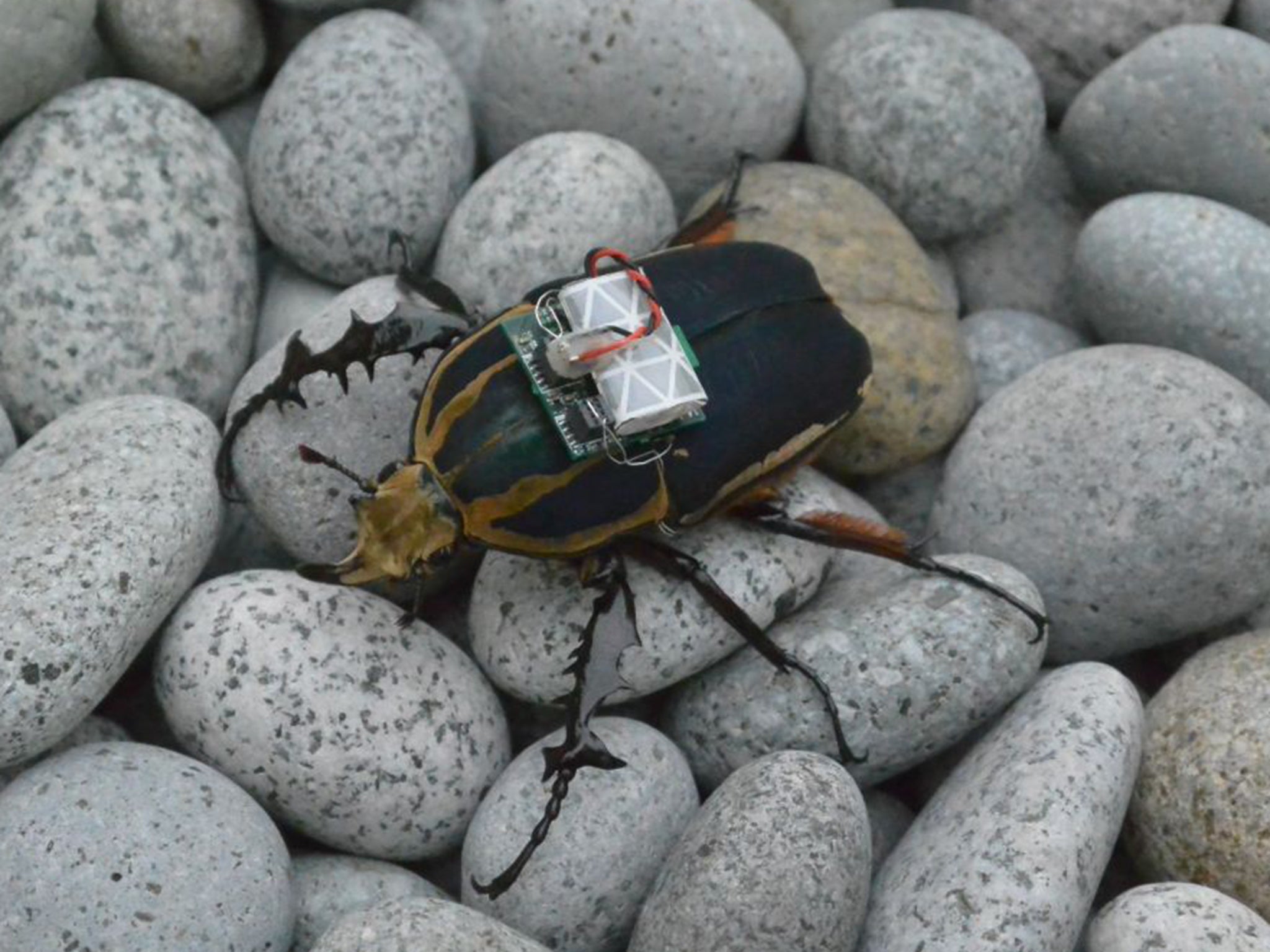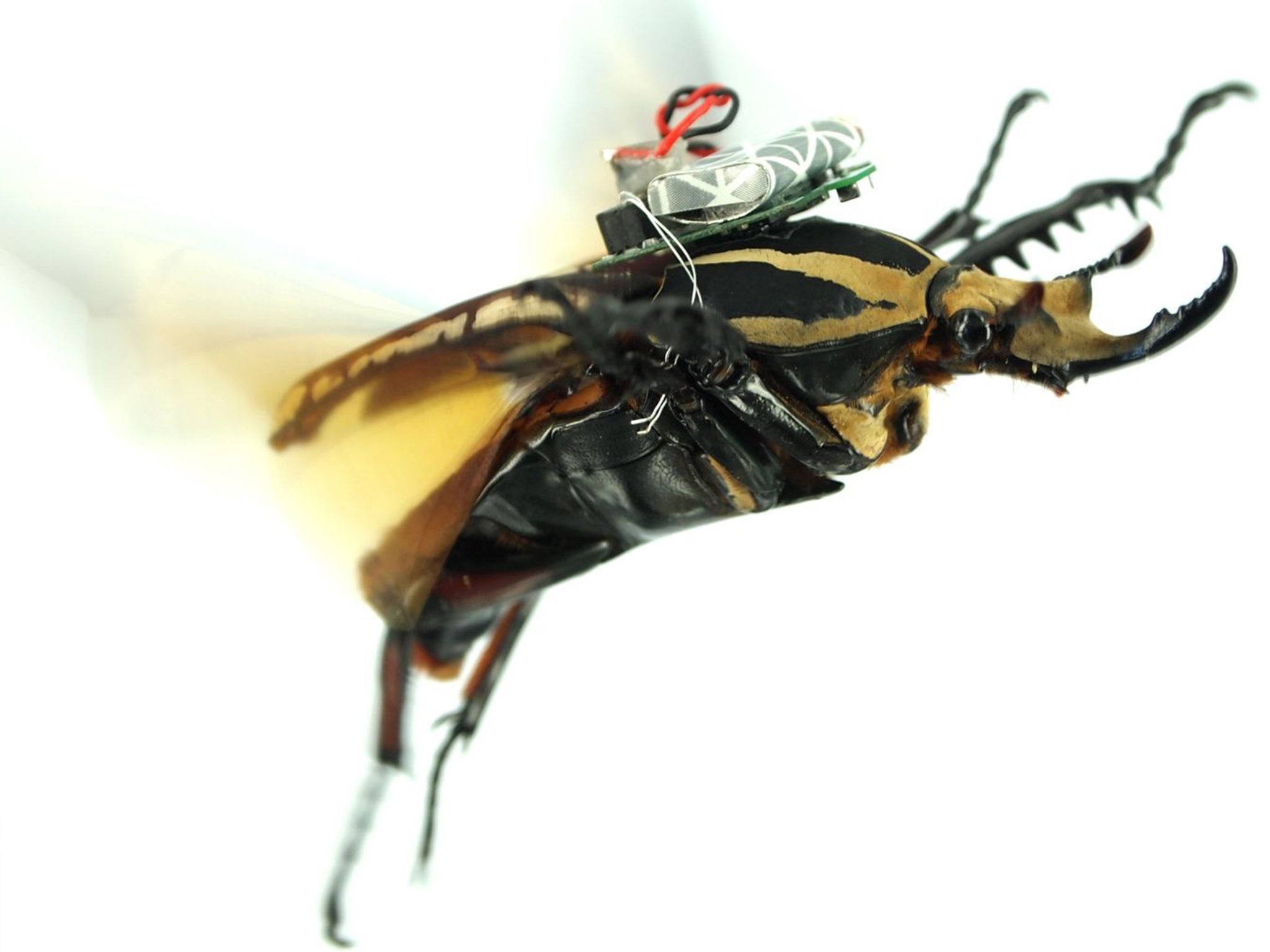Scientists manage to control flight of 'cyborg beetles' for the first time
Further advances could see insects used as drones

Your support helps us to tell the story
From reproductive rights to climate change to Big Tech, The Independent is on the ground when the story is developing. Whether it's investigating the financials of Elon Musk's pro-Trump PAC or producing our latest documentary, 'The A Word', which shines a light on the American women fighting for reproductive rights, we know how important it is to parse out the facts from the messaging.
At such a critical moment in US history, we need reporters on the ground. Your donation allows us to keep sending journalists to speak to both sides of the story.
The Independent is trusted by Americans across the entire political spectrum. And unlike many other quality news outlets, we choose not to lock Americans out of our reporting and analysis with paywalls. We believe quality journalism should be available to everyone, paid for by those who can afford it.
Your support makes all the difference.Scientists have controlled the mid-air movements of free-flying insects using a radio transmitter and a miniature backpack of electronics worn by “cyborg beetles”.
The beetles were made to take off and land, fly to the right or left, and even to hover in mid-flight depending on the radio commands, the scientists said.
If the technology can be further refined, it would be possible in the future to use flying insects as miniature drones loaded with tiny electronic sensors for flying over and searching difficult terrain, they said.
Although electronics have been used before to control the movements of insects, it is believed to be the first scientific demonstration of using radio commands to control the fine aerial movements of free-flying beetles, the researchers said.
“Beetles are ideal study subjects because they can carry relatively heavy payloads,” said Hirotaka Sato of the Nanyang Technological University in Singapore, who carried out the research with colleagues at the University of California, Berkeley.
“We could easily add a small microphone and thermal sensors for applications in search-and-rescue missions. With this technology, we could safely explore areas not accessible before, such as the small nooks and crevices in a collapsed building,” Dr Sato said.

The study, published in the journal Current Biology, involved the attachment of a tiny microprocessor and a built-in wireless receiver and transmitter to the back of the giant flower beetle, which is six centimetres long and weighs eight grams – nearly the same as a pound coin.
The complete device is powered by a 3.9 volt lithium battery and is connected to six micro-electrodes implanted into the insect’s wing-folding coleopteran muscles, which for two centuries were thought to be irrelevant for flight, but which now appear to be involved in navigation, the scientists discovered.
“Since the 1800s, this coleopteran muscle was thought to function solely in wing folding. Our wireless system allows us to record neuromuscular movements in natural, free flight, so we see now that this muscle is also used for turning,” Dr Sato said.
Tests in an indoor flight laboratory have shown that flower beetles can be made to swerve to the right or left as well as make a carefully controlled, right-angled turn as a result of radio commands sent by a human operator, the scientists report.
Signals sent to the beetle every thousandth of a second stimulated it to take off, turn left or right, hover in mid-flight and land again. The giant flower beetles were untethered and could fly completely free, they said.
“In our earlier work using beetles in remote-controlled flight, we showed excellent control of flight initiation and cessation, but relatively crude control of steering during free flight,” said Michel Maharbiz of the University of California, and principal investigator on the study.
“Our findings about the flight muscle allows us to demonstrate for the first time a higher level of control of free-flying beetles. It’s a great partnership between engineering and science,” Dr Maharbiz said.
“This is a demonstration of how tiny electrodes can answer interesting, fundamental questions for the larger scientific community. Biologists trying to record and study flying insects typically had to do so with the subject tethered. It has been unclear if tethering interfered with the insect’s natural flight motions,” he said.
Previous studies have show that it is possible to control the movements of walking insects, so it may be possible to combine both to engineer cyborg beetles capable of flying over difficult terrain and then landing to make a more thorough search of smaller spaces.
Join our commenting forum
Join thought-provoking conversations, follow other Independent readers and see their replies
Comments